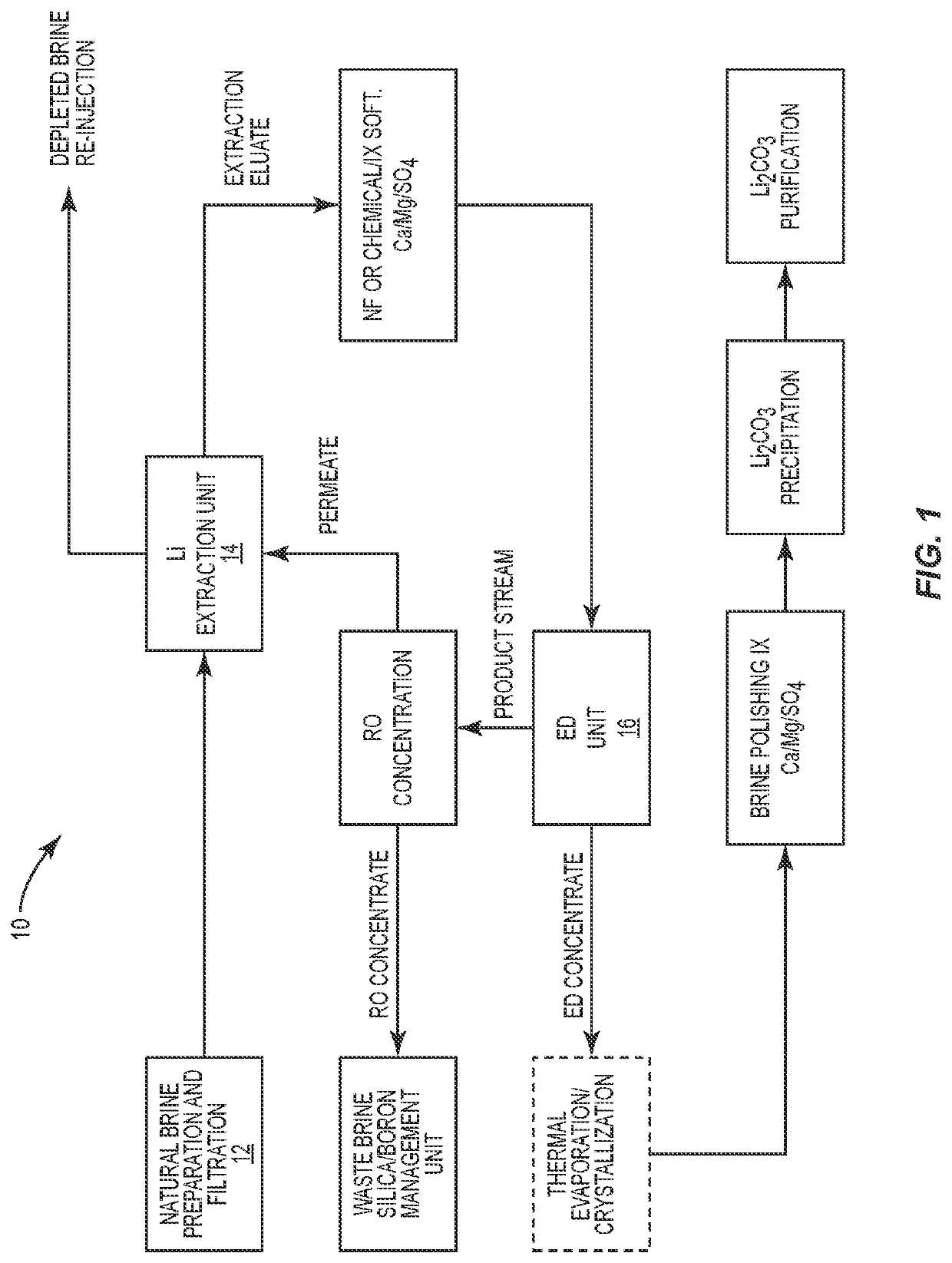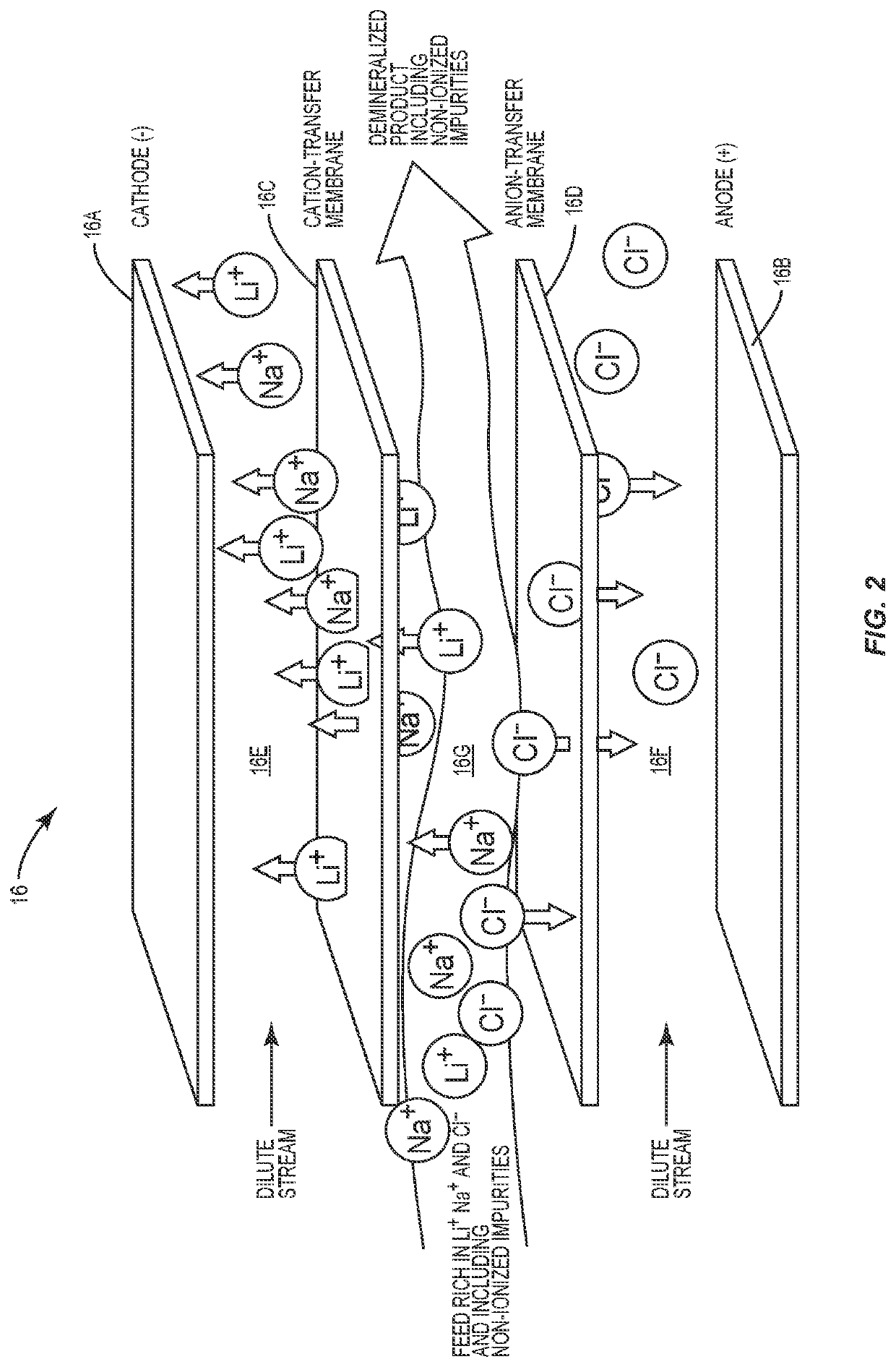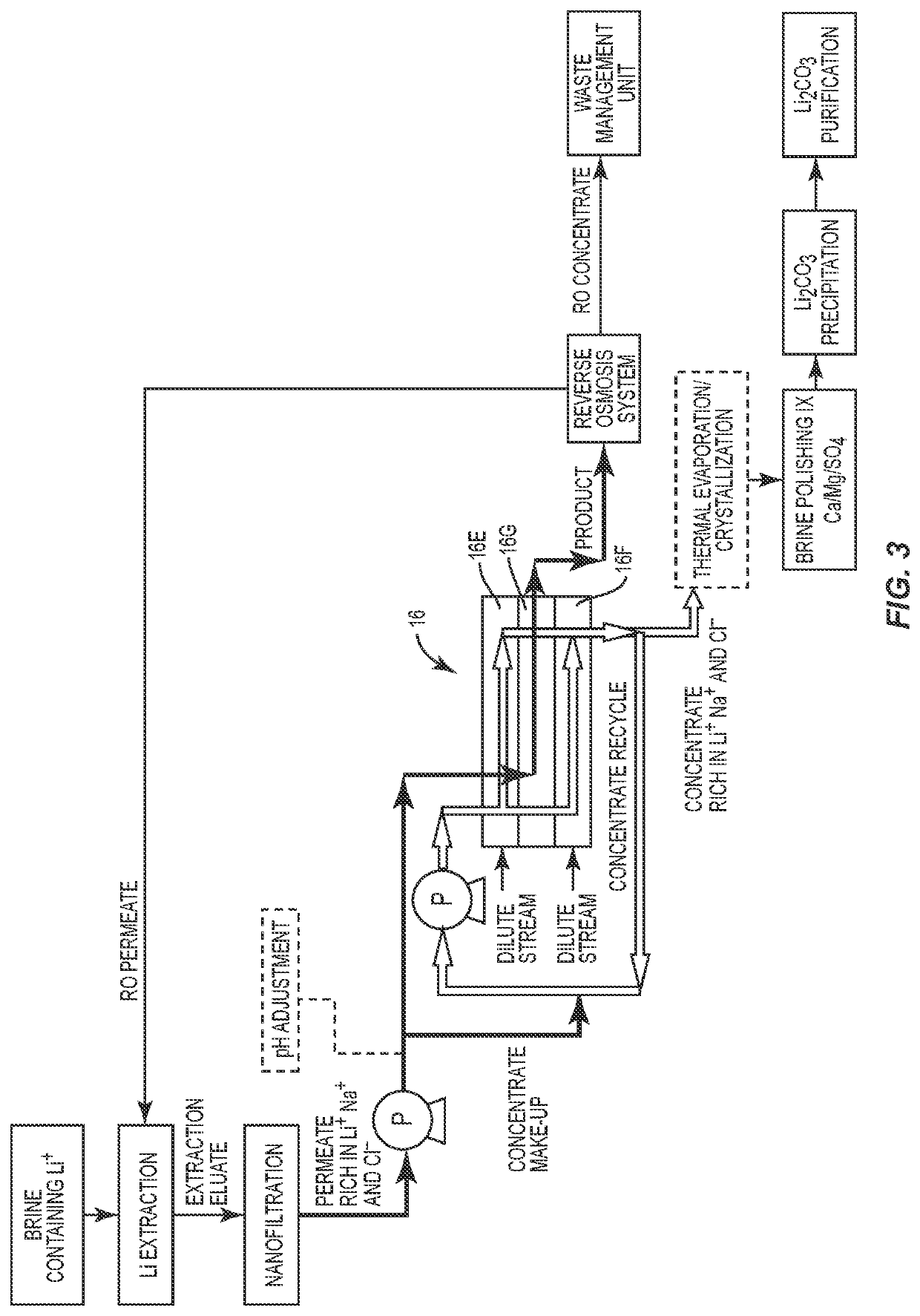Method for concentrating and purifying eluate brine for the production of a purified lithium compound
a technology of purification and eluate brine, applied in the field of lithium recovery and purification, can solve the problems of reducing the efficiency of lithium concentrating system, few commercial resources where lithium is found,
- Summary
- Abstract
- Description
- Claims
- Application Information
AI Technical Summary
Benefits of technology
Problems solved by technology
Method used
Image
Examples
Embodiment Construction
[0011]The present invention relates to a process for recovering lithium. Lithium is a highly reactive alkali metal that offers excellent heat and electrical conductivity. These properties make lithium particularly useful for lithium ion batteries for electric cars and consumer electronics, as well as useful for pharmaceutical and chemical applications. Because of its high reactivity, pure elemental lithium is not found in nature but is instead present as a constituent of salts and other compounds. Most commercial lithium is available in the form of lithium carbonate which is a relatively stable compound that can easily be converted to other salts or chemicals.
[0012]Lithium salts are found in underground deposits of brine, mineral ore as well as sea water and geothermal brines. While lithium is fairly abundant, not all lithium sources are deemed economically viable at this time. Generally speaking, however, commercial lithium arises from two main sources: underground brine and minera...
PUM
| Property | Measurement | Unit |
|---|---|---|
| hardness | aaaaa | aaaaa |
| residual hardness | aaaaa | aaaaa |
| permeate | aaaaa | aaaaa |
Abstract
Description
Claims
Application Information
 Login to View More
Login to View More - R&D
- Intellectual Property
- Life Sciences
- Materials
- Tech Scout
- Unparalleled Data Quality
- Higher Quality Content
- 60% Fewer Hallucinations
Browse by: Latest US Patents, China's latest patents, Technical Efficacy Thesaurus, Application Domain, Technology Topic, Popular Technical Reports.
© 2025 PatSnap. All rights reserved.Legal|Privacy policy|Modern Slavery Act Transparency Statement|Sitemap|About US| Contact US: help@patsnap.com



